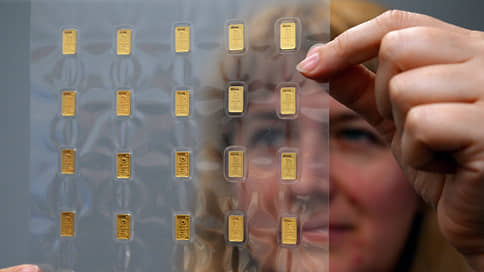Gold is losing weight – Newspaper Kommersant No. 192 (7393) of 10/17/2022
[ad_1]

The assets of international funds investing in gold fell to the lowest level in a year and a half of 3,000 tons. Interest in the metal is declining amid rising US Treasury yields to multi-year highs amid plans by the Fed to aggressively raise the base rate. The price of gold has approached its lowest level since April 2020. However, Russian investors maintain a steady interest in it, seeing gold as an alternative to foreign exchange savings, the toxicity of which has increased against the backdrop of sanctions.
According to Bloomberg, at the end of last week, the assets of exchange-traded funds investing in gold fell to 3 thousand tons, updating the minimum since the beginning of May 2020. A steady decline in investments in the precious metal continues for the fifth month in a row, and during this time the assets of the funds have decreased by almost 327 tons.
Interest in the precious metal is falling amid tightening of the Fed’s monetary policy. At the last meeting in September, the regulator raised the key rate by 0.75 percentage points (pp) to 3–3.25%, and did not rule out a rate hike to 4.5% by the end of the year. This led to an increase in the yield of US Treasury bonds. Last week, the yield of ten-year US Treasuries (UST) for the first time since May 2008 rose above the level of 4% per annum. On Friday, the yield stopped above 4.02% per annum, while at the beginning of the previous week it was near 3.89% per annum, and at the beginning of the year – 1.5% per annum.
Gold is comparable in reliability to US Treasury bonds, but unlike them, it does not generate interest income, therefore, Anton Chernyshev, an analyst at SberCIB Investment Research, notes that it is losing its attractiveness in the eyes of investors.
Emerging Portfolio Fund Research (EPFR) data also speaks of a decline in interest in gold. According to Kommersant’s estimate, based on a Bank of America report (taking into account EPFR data), over the past 16 weeks ended October 12, outflows from gold funds exceeded $12 billion. This is the longest withdrawal period since 2014. The decline in investment demand had a negative impact on the cost of the metal – on October 14, the price dropped to $1,640 per troy ounce, more than 3% lower than the close of the previous week and close to the minimum since April 2020.
Russian investors stand out from the general trend and continue to actively buy physical metal. Last week, VTB reported that since the beginning of March, wealthy investors have bought 20.5 tons of gold bars. Dozens of tons of gold were purchased by Sberbank clients (see Kommersant dated August 8). Investments in metal are also growing through depersonalized metal accounts (see Kommersant of October 5). This is not hindered by either the weak dynamics in the local gold market or the rise in rates in the domestic debt market. According to the results of Friday trading, the ruble price of gold on the Moscow Exchange amounted to 3.32 thousand rubles. for 1 year. In the last five months, quotes are in the range of 3-3.5 thousand rubles. per 1 g, although last year they exceeded 4 thousand rubles. for 1 year
The yield of 10-year OFZs following the results of trading on Friday exceeded 10% per annum, 1 percentage point higher than the value of the end of summer. According to Alfa Capital portfolio manager Dmitry Skryabin, for Russian investors, the interest in savings in gold is more associated not so much with rising rates or an attempt to hedge market risks, but with a method of currency diversification. “In part, gold has become a replacement for dollar assets, which have become too risky and expensive to hold,” he notes.
At the same time, market participants believe that in the coming months, the monetary policy of the Fed will continue to put pressure on the dollar quotes of gold. “If inflation continues to rise, as evidenced by macro statistics, then the Fed will have to raise the rate even higher,” explains Evgeny Kalyanov, an expert on the stock market at BCS World Investments. According to Mr. Scriabin, global interest in gold can only return in the event of an unexpected negative event in the market, for example, if the recession in the economy turns out to be much stronger than expected (for example, US GDP will fall by 5%), or a full-fledged geopolitical global crisis begins.
[ad_2]
Source link





